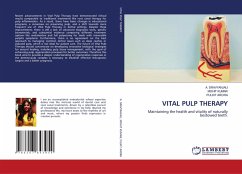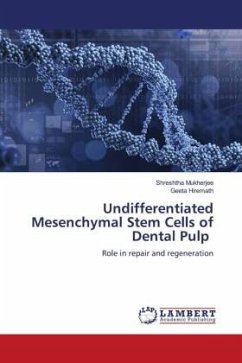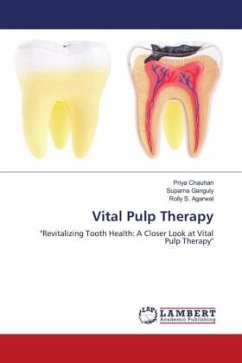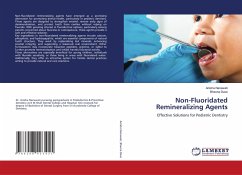
Recent Innovations in Pulp Capping Agents
Versandkostenfrei!
Versandfertig in 6-10 Tagen
29,99 €
inkl. MwSt.

PAYBACK Punkte
15 °P sammeln!
Dental pulp capping is a procedure used to protect the dental pulp after it has been exposed or nearly exposed due to caries, trauma, or other procedures. The primary goal of pulp capping is to preserve the vitality of the pulp and encourage the formation of reparative dentin. The success of this procedure largely depends on the type of capping agent used. Recent advances in pulp capping agents have focused on improving biocompatibility, sealing ability, and the overall clinical success of the materials used. Here are some of the notable developments: Calcium Hydroxide, Mineral Trioxide Aggreg...
Dental pulp capping is a procedure used to protect the dental pulp after it has been exposed or nearly exposed due to caries, trauma, or other procedures. The primary goal of pulp capping is to preserve the vitality of the pulp and encourage the formation of reparative dentin. The success of this procedure largely depends on the type of capping agent used. Recent advances in pulp capping agents have focused on improving biocompatibility, sealing ability, and the overall clinical success of the materials used. Here are some of the notable developments: Calcium Hydroxide, Mineral Trioxide Aggregate (MTA), Calcium Silicate-Based Materials, Biomimetic Materials. These advancements aim to improve the outcomes of vital pulp therapy by providing materials that offer better sealing, reduced setting times, and enhanced biocompatibility, ultimately promoting the healing and preservation of the pulp tissue.














